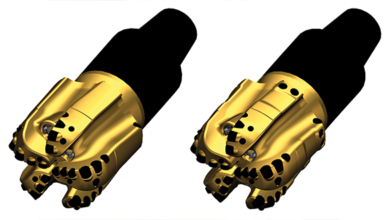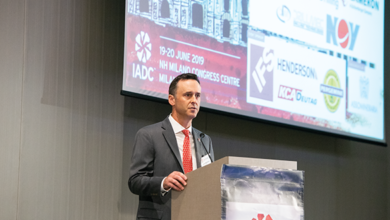Drilling & Completion News
BSEE announces issuance of final Well Control Rule
The US Bureau of Safety and Environmental Enforcement (BSEE) has released the final Blowout Preventer Systems and Well Control regulations. The final Well Control Rule leaves unchanged 274 out of 342 original Well Control Rule provisions – approximately 80%. A total of 68 provisions were identified as appropriate for revision, and 33 provisions were added.
BSEE says it considered all 424 recommendations arising from 26 separate reports from 14 organizations and found that none of the revisions contravened any of these recommendations.
Improvements to the requirements for BOP design and testing include:
• Limiting the number of connection points to the BOP, reducing the number of potential failure points;
• Equipping each BOP with a high-flow receptacle to ensure faster delivery of fluid to perform the function from a remotely operated vehicle;
• Requiring an array of rams with specific capabilities, allowing the most effective use of each ram type and maximizing functionality; and
• Improving the expected lifespan of a critical BOP component by specifying a testing methodology that provides a readiness check without putting unnecessary wear and tear on the component.
BSEE published proposed revisions to the Well Control Rule on 11 May 2018, opening a 60-day public comment period that was later extended to 87 days. During the open comment period, BSEE received over 118,000 comments on the proposed rule.
Exxonmobil adds to exploration acreage in Namibia
ExxonMobil announced it will increase its exploration acreage in Namibia with the addition of approximately 28,000 sq km following the signing of an agreement for blocks 1710 and 1810, and farm-in agreements with National Petroleum Corporation of Namibia for blocks 1711 and 1811A.
The blocks extend from the shoreline to about 215 km offshore Namibia in water depths up to 4,000 m. ExxonMobil plans to begin acquisition of seismic data and analysis activities in 2019.
Additionally, Exxonmobil announced it has funded the Liza Phase 2 development offshore Guyana to produce up to 220,000 bbl/day. This will capitalize on the development potential of the Stabroek Block, where the company estimates it will produce more than 750,000 bbl/day by 2025.
A total of six drill centers and 30 wells – including 15 production, nine water injection and six gas injection wells – are planned. Phase 2 startup is expected in mid-2022 and will develop approximately 600 million barrels of oil.
Liza Phase 2 is expected to cost $6 billion, including a lease capitalization cost of approximately $1.6 billion, for the Liza Unity FPSO vessel.
Discovery made at Gladden Deep in Mississippi Canyon
W&T Offshore has announced an oil discovery at its first exploration well of 2019 at Gladden Deep in the deepwater Gulf of Mexico in Mississippi Canyon block 800. The well was one of 14 planned for the drilling program under the Monza JV.
Gladden Deep is located in approximately 3,000 ft of water and was drilled to a total measured depth of 18,324 ft and encountered 201 ft of net oil pay. This single-well completion is expected to be brought online through the existing Gladden pipeline to the Medusa spar in Q4 2019 through a subsea tieback.
New harsh-environment rig completed for Enscorowan
Keppel FELS, has delivered ENSCO 123 to EnscoRowan. Featuring a 2.5 million-lb quad derrick, fully automated offline pipe-handling systems and ultra-high capacity jacking and fixation systems, the KFELS Super A Class jackup design can operate in water depths up to 400 ft. The harsh-environment jackup rig has been chartered for operations in the UK North Sea ahead of its delivery.
5 exploration blocks offered in 2nd Abu Dhabi bid round

Abu Dhabi National Oil Company (ADNOC) has announced details of the second round of five new geographical oil and gas exploration blocks open for bidding in Abu Dhabi, following conclusion of the debut bid round. Three of the five blocks are offshore, and the remaining two onshore blocks offer separate licensing opportunities for conventional and unconventional oil and gas. In total, the five blocks comprise an area of approximately 34,000 sq km. The receipt of bids will close at the end of November.
ADC to secure Schlumberger’s middle East rig business
Saudi Arabia’s TAQA announced that its drilling subsidiary, Arabian Drilling Company (ADC), will acquire Schlumberger’s Middle East onshore drilling rigs business in Kuwait, Oman, Iraq and Pakistan for $415 million.
The transaction transforms ADC into a regional drilling leader with 58 onshore and nine offshore rigs. ADC, a drilling rig partnership between TAQA and Schlumberger, was established in 1964 through a royal decree.
Huisman to deliver land rig for coalbed methane drilling
Huisman has signed a contract to deliver an HM100 land drilling rig, including mud system and power generation, to Sirius Well Manufacturing Services. The mobile trailerized rig will be used to drill for coalbed methane that is subsequently converted to liquefied natural gas for exports in Australia starting Q2 2020.
Maersk Intrepid jackup to undergo upgrades into hybrid, low-emission rig
Maersk Drilling has announced that it will launch the first hybrid, low-emission rig, combining hybrid power, data intelligence and cleaning technology.
The Maersk Intrepid is entering a series of upgrades to convert it to a hybrid rig with low levels of NOx emissions, adding data intelligence to further reduce energy consumption and CO2 emissions. The upgrades are being carried out in cooperation with the jackup’s current customer, Equinor, which has introduced compensation formats to stimulate emission reductions.
Maersk Drilling has successfully applied for project funding through the NOx Fund, a Norwegian industry fund dedicated to reducing NOx emissions. The fund is contributing a grant of up to 80% of project costs, subject to verification of the emission-reducing upgrades. It sees the coming upgrades of Maersk Intrepid as a benchmark for the offshore industry.
The first upgrade of the Maersk Intrepid will be the installation of batteries for the hybrid power solution, which is expected to be completed in July this year. The full implementation of all low-emission upgrades is expected to be completed by the end of 2019, and Maersk Drilling will use the learnings from Maersk Intrepid to evaluate how to proceed with potential upgrades to reduce emissions from other Maersk Drilling rigs.
Maersk Intrepid is an ultra-harsh environment XLE jackup built in 2014. It is contracted to Equinor for operational support on the Martin Linge field offshore Norway.
Shell begins production from Appomattox in Gulf of Mexico

Production has started at the Shell-operated Appomattox floating production system, months ahead of schedule. Appomattox, which has an expected production of 175,000 BOED, is the first commercial discovery brought into production in the deepwater Gulf of Mexico Norphlet formation.
In separate news, Shell announced a significant discovery at the Blacktip prospect in the deepwater US Gulf of Mexico. The Blacktip exploration well has encountered more than 400 ft net oil pay with good reservoir and fluid characteristics in the Alaminos Canyon Block 380, approximately 30 miles from the Perdido platform and Whale discovery.
Equinor to acquire additional interest in Caesar Tonga
Equinor has exercised its preferential rights to acquire an additional 22.45% interest in the Caesar Tonga oilfield from Shell Offshore for a total consideration of $965 million in cash. This will increase Equinor’s interest from 23.55% to 46.00%.
Anadarko remains the operator with a 33.75% interest, and Chevron retains its 20.25% interest. Caesar Tonga is located in the Gulf of Mexico’s Green Canyon area.
Separately, Equinor has been awarded five licenses by the Oil and Gas Authority on the UK Continental Shelf, four as operator and one as partner. The licenses are situated in the Moray Firth and East Shetland Platform in the North Sea. Equinor was also awarded an extension to the Frigg License in the Northern North Sea.
Extension keeps KCA Deutag on Scott Platform
KCA Deutag has been awarded an extension to its existing contract with CNOOC Petroleum Europe for the Scott platform in the UK North Sea.
The contract extension for the provision of drilling operations and maintenance services came into effect on 1 March 2019. It has an initial term of four years, plus a two-year extension option. KCA Deutag has been the drilling contractor on the Scott platform since 1992.
Sonoro awarded Selat Panjang PSC in bid round
Sonoro Energy has announced that, along with its Indonesian partner PT Menara Global Energi, the company has been awarded the Selat Panjang PSC in the 2019 Conventional Bid Round in Indonesia. Sonoro has a 25% interest in the project, with an option for up to an additional 24%. The 923-sq km Selat Panjang PSC area is situated in Riau province, Central Sumatra and is approximately 925 km from Jakarta and 110 km from Pekanbaru.
Latshaw partners with University of Central Oklahoma to provide student rig tour

In 2008, the University of Central Oklahoma (UCO) in Edmond, Okla., began to provide students with a class that can prepare them for working in the industry. UCO’s Department of Adult Education & Safety Sciences department teamed up with oil and gas industry leaders to create the Advanced Field Applications in Petroleum Safety class. The goal was to provide a basic understanding of the oil and gas industry and showcase career opportunities.
Since 2013, Latshaw Drilling has worked with UCO each year to host an active drilling rig tour. Another tour was held recently on Latshaw’s Rig 13. The students received information about basic equipment, operations and safety on the rig.
Latshaw also has a New to Industry (NTI) program designed to take a person who has never worked on a drilling rig and provide the necessary training and development to become a floorhand. Latshaw Drilling reports that a 2018 UCO graduate applied to the NTI program after a rig tour and is now completing his first year on Latshaw Rig 12.
Omron donates design, robotics lab to University of Houston

The Cullen College of Engineering at the University of Houston recently unveiled a laboratory donated by the Omron Foundation, the charitable arm of Omron in the US.
The Senior Design and Robotics Lab was created for electrical and computer engineering students. It contains an area dedicated to senior design projects.
“Prospective employers will expect them to speak intelligently about what they worked on for their design project, so the experience they gain at this stage is very important,” Len Trombetta, Associate Department Chair, said. “This makes our graduates very marketable because these are skills companies want. We’re grateful to Omron for making this possible.”
Omron Automation Americas President, CEO and COO Robb Black said: “We want to bring the skills (students) have learned in school into the manufacturing sector. I think it’s a great way for students to learn real-world technology and apply it once they leave.”
Simulator suite installed at University of Wyoming
A new multimillion-dollar drilling simulator suite has been installed at the University of Wyoming in Laramie, Wyoming. Drilling Systems worked with the College of Engineering and Applied Science to build the Drilling and Completions Simulation Laboratory, part of a new $105 million Engineering Education and Research Building, which will be officially opened in September.
The laboratory will be used to train future talent using cutting-edge simulator technology and immersive training techniques. The center features the dual cyber chair DrillSIM 6000 and conventional brake handle DrillSIM 5000 and includes the CTS 5000 coiled tubing and WL5000 wireline simulators for well intervention and completion activities. Using these technologies, students will learn how to operate complex drilling, well control and well servicing equipment.
The collaboration with Drilling Systems will allow the University of Wyoming to create masters and Ph.D. programs in drilling and completions to complement existing programs.




